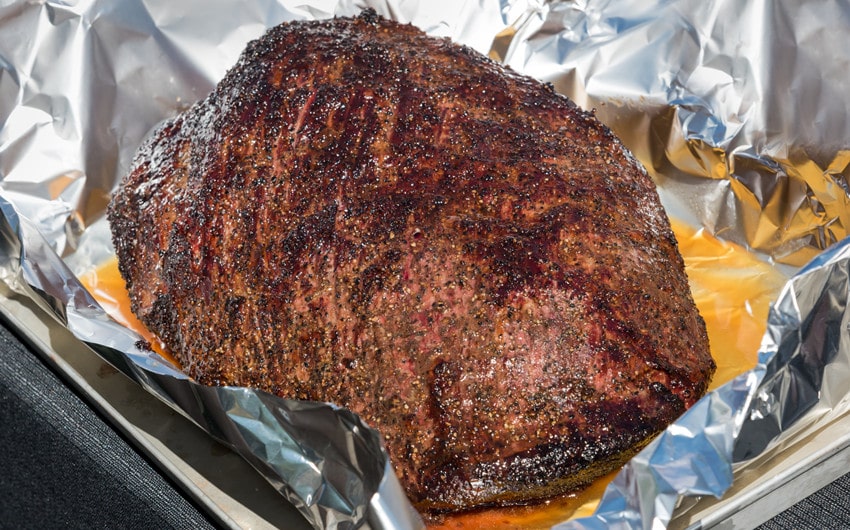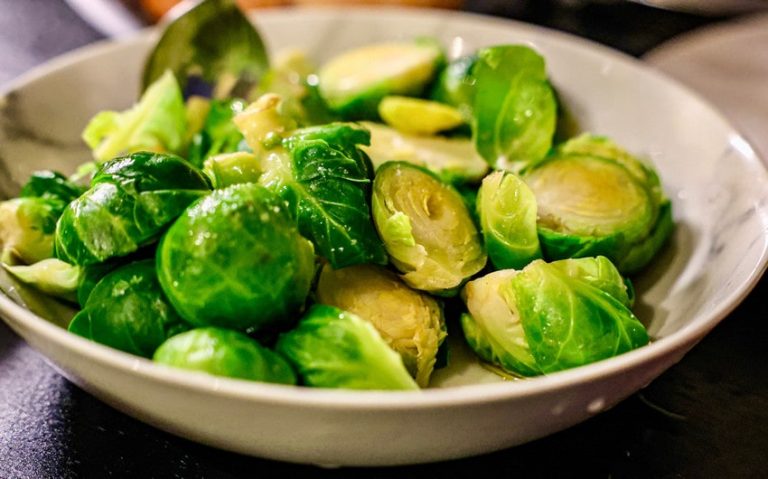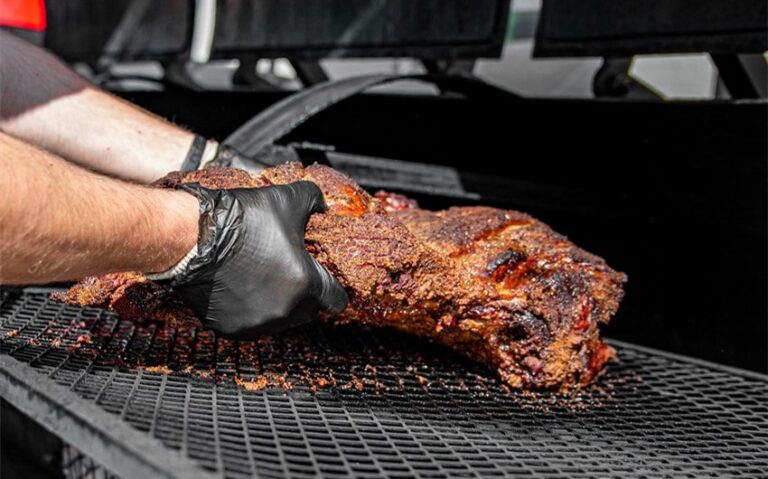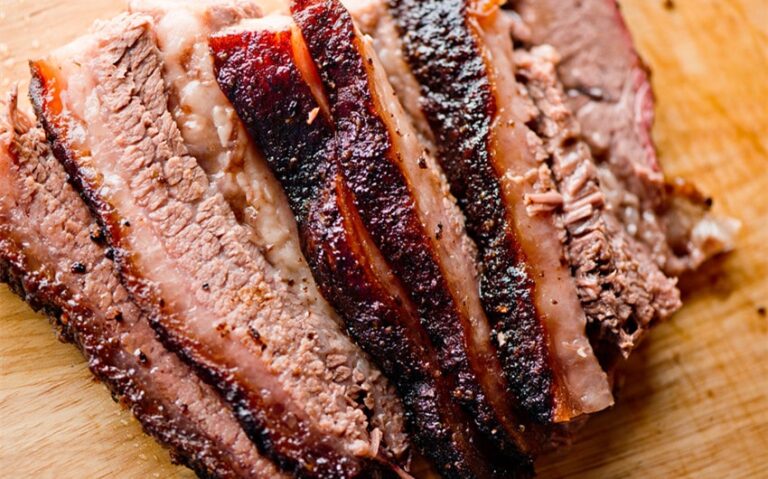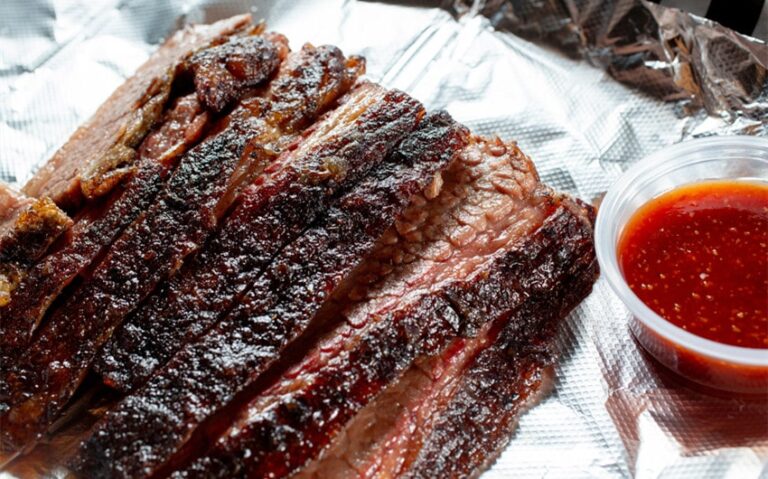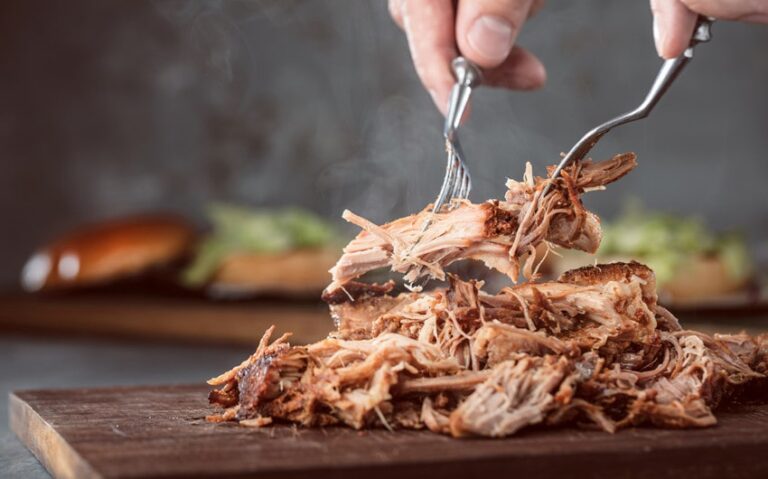How to Cook Brisket in the Oven: Easy Step-by-Step Guide
Cooking a delicious brisket doesn’t always require a smoker or grill. If you’re wondering how to cook brisket in the oven, you’re in for a treat. This method is perfect for those who want to enjoy tender, flavorful brisket without the fuss of outdoor cooking. By using your oven, you can achieve mouthwatering results with minimal effort.
In this guide, we’ll walk you through each step, from choosing the right cut to serving the perfect slices. Whether you’re a BBQ enthusiast or a home cook, this easy approach will help you master brisket in no time.
Choosing the Right Brisket
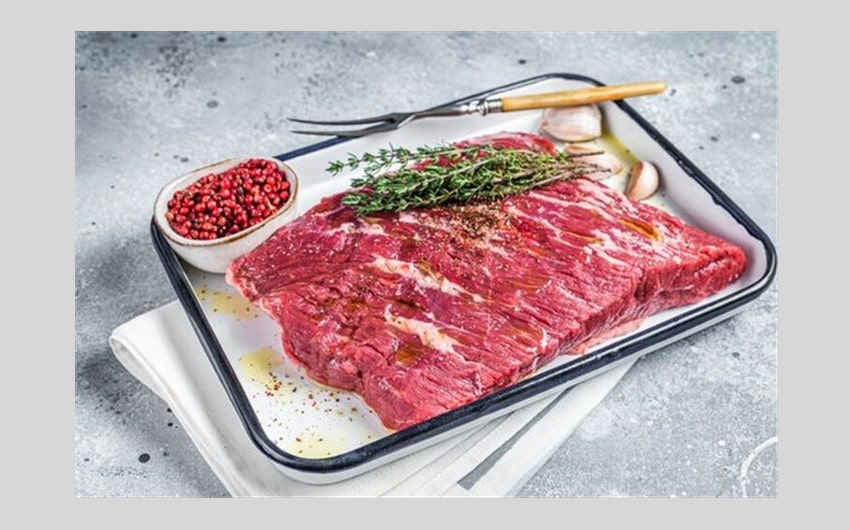
Image source: Pinterest
Choosing the right brisket is the first step to ensuring a successful cooking experience. The quality and type of brisket you select will significantly impact the flavor and texture of your final dish. Brisket comes in two primary cuts: the flat cut and the point cut.
Flat Cut
Also known as the first cut, the flat cut is leaner and has a more uniform shape, making it easier to slice. It is a good choice for those who prefer less fat and a more straightforward cooking process.
Point Cut
Also known as the second cut or deckle, the point cut is fattier and has more connective tissue. This cut is known for its rich flavor and tenderness due to the higher fat content. It’s ideal for those who enjoy a juicier, more flavorful brisket.
Tips for Selecting a Quality Brisket:
- Marbling: Look for a brisket with good marbling. Marbling refers to the white streaks of fat within the meat, which melt during cooking and enhance the flavor and tenderness.
- Weight: Choose a brisket that weighs between 10 to 14 pounds for the best results. Larger briskets are more forgiving during cooking, as they retain moisture better.
- Color: Opt for a brisket with a deep, rich red color. Avoid any cuts that look pale or have a grayish tint, as this can indicate lower quality meat.
Preparing the Brisket
Properly preparing the brisket before cooking is essential for achieving the best flavor and texture. This involves trimming the fat, applying a rub or marinade, and allowing the brisket to rest.
Trimming the Fat Cap
Trimming the fat cap helps to ensure even cooking and prevents the brisket from becoming too greasy. It also allows the seasoning to penetrate the meat better.
Using a sharp knife, trim the fat cap to about 1/4 to 1/2 inch thick. Be careful not to remove too much fat, as this layer helps to keep the meat moist during cooking. Trim any particularly thick or uneven sections to create a uniform layer.
Applying a Dry Rub or Marinade
A dry rub is a mixture of spices and seasonings that adds flavor to the brisket. Common ingredients include salt, black pepper, paprika, garlic powder, onion powder, and brown sugar. Generously apply the rub to all sides of the brisket, pressing it into the meat to ensure it adheres well.
Dry Rub Recipe for Brisket:
- 1/4 cup kosher salt
- 1/4 cup black pepper
- 1/4 cup paprika (sweet or smoked, depending on your preference)
- 2 tablespoons garlic powder
- 2 tablespoons onion powder
- 2 tablespoons brown sugar
- 1 tablespoon chili powder
- 1 tablespoon cumin
- 1 tablespoon mustard powder
- 1 teaspoon cayenne pepper (optional, for a bit of heat)
A marinade can also be used to infuse the brisket with additional flavor. A typical marinade might include ingredients like soy sauce, Worcestershire sauce, apple cider vinegar, and various spices. Place the brisket in a large resealable bag or container with the marinade and refrigerate for several hours or overnight.
Letting the Brisket Sit
Allowing the brisket to sit with the rub or marinade helps the flavors to penetrate the meat more deeply, enhancing the overall taste.
After applying the rub or marinade, let the brisket sit in the refrigerator for at least a few hours. For the best results, allow it to rest overnight. Remove the brisket from the refrigerator about an hour before cooking to bring it to room temperature, which promotes even cooking.
Setting Up the Oven
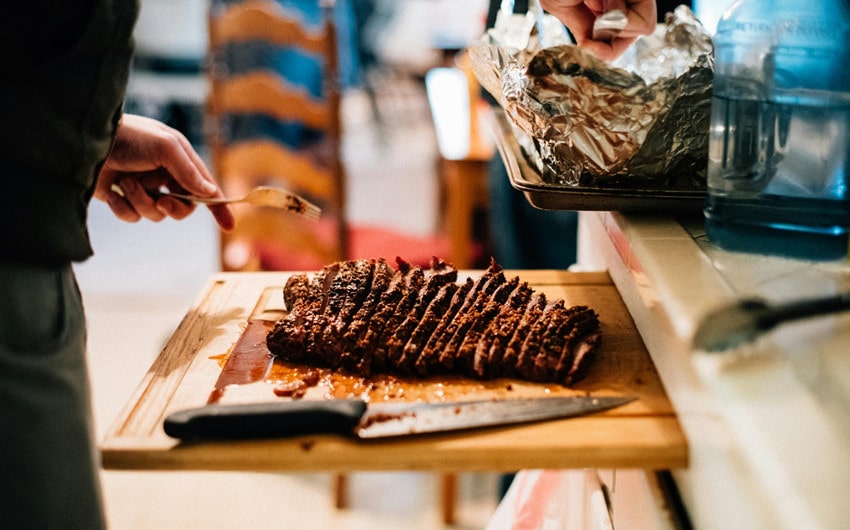
Properly setting up your oven is crucial for ensuring your brisket cooks evenly and comes out tender and juicy. Here’s how to prepare your oven for brisket cooking:
Preheating the Oven
Preheat your oven to 250°F (120°C). This low and slow cooking method helps break down the tough connective tissues in the brisket, resulting in tender meat. Allow the oven to fully preheat to ensure a stable cooking environment. This helps maintain an even temperature throughout the cooking process.
Choosing the Right Roasting Pan or Baking Dish
Use a roasting pan or a large baking dish that can comfortably fit the brisket without it touching the sides. This ensures even cooking and prevents the meat from steaming rather than roasting.
If possible, use a roasting rack inside the pan to elevate the brisket. This allows heat to circulate around the meat and promotes even cooking. If you don’t have a rack, you can create a makeshift one using rolled-up aluminum foil.
Adding Liquid for Moisture
To keep the brisket moist, add a liquid to the bottom of the roasting pan. Options include beef broth, beer, apple juice, or even water. The liquid will create steam during cooking, helping to keep the meat tender.
Add about 1 to 2 cups of liquid to the pan. You can also periodically check the liquid level and add more if needed during the cooking process.
Cooking the Brisket
Cooking the brisket in the oven involves a low and slow approach to ensure the meat becomes tender and flavorful. Here’s a step-by-step guide:
Placing the Brisket in the Oven
Place the brisket in the roasting pan fat side up. The fat will render during cooking and help baste the meat, keeping it moist. Cover the pan with aluminum foil or a lid. This helps retain moisture and prevents the brisket from drying out during the long cooking process.
Cooking Low and Slow
Cook the brisket at 250°F (120°C) for approximately 1 hour per pound. For a 10-pound brisket, this means cooking for about 10 hours. This slow cooking method allows the connective tissues to break down, resulting in a tender brisket.
Use a meat thermometer to monitor the internal temperature of the brisket. The target temperature is between 195°F and 205°F (90°C to 96°C), which ensures the meat is tender and easy to slice.
Wrapping the Brisket
About halfway through the cooking process, or once the brisket reaches an internal temperature of around 160°F (71°C), consider wrapping it in aluminum foil or butcher paper. This helps retain moisture and promotes even cooking.
Wrapping the brisket helps keep it moist and tender. It also accelerates the cooking process by trapping heat and steam inside the wrap.
Monitoring and Adjusting
Periodically check the liquid in the roasting pan and add more if necessary to maintain moisture. If you prefer, you can baste the brisket occasionally with the pan juices to enhance flavor and moisture.
Resting and Slicing
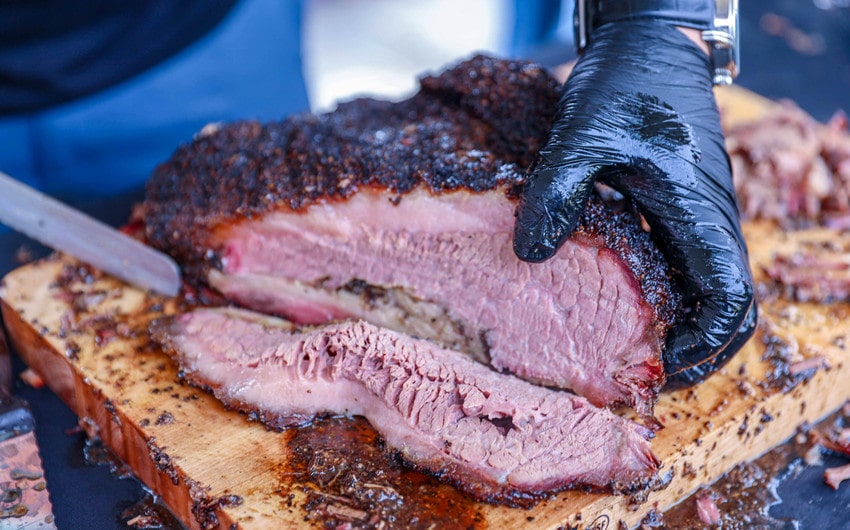
Once the brisket is cooked to perfection, the final steps of resting and slicing are crucial for ensuring the best flavor and texture.
Resting the Brisket
Resting allows the juices to redistribute throughout the meat, resulting in a more flavorful and moist brisket. Cutting into the brisket too soon can cause the juices to spill out, leaving the meat dry.
Let the brisket rest for at least 30 minutes, but ideally for 1 to 2 hours. For longer resting times, you can keep the brisket wrapped in foil and place it in an insulated cooler (without ice) to maintain its temperature. Keep the brisket wrapped during the resting period. You can also cover it with a towel for added insulation.
Slicing the Brisket
Use a long, sharp knife designed for slicing meat. A serrated knife or an electric knife can also work well.
Identify the grain of the meat (the direction of the muscle fibers). Always slice against the grain to maximize tenderness. For a whole brisket, the flat and point cuts have grains running in different directions, so adjust your slicing angle accordingly.
Aim for slices that are about 1/4 inch thick. For thicker parts of the brisket, like the point, you might want to slice a bit thinner.
Serving the Brisket
Lay the slices neatly on a serving platter, with the point cut on one side and the flat cut on the other. This presentation helps guests choose their preferred portion.
Serve with a side of BBQ sauce for those who prefer additional flavor, but a well-cooked brisket is delicious on its own.
Delicious Ways to Serve Your Oven-Cooked Brisket
Cooking brisket in the oven results in a tender, flavorful dish that can be enjoyed in various ways. Here are some serving suggestions to make the most of your delicious brisket:
1. Classic BBQ Plate
A classic BBQ plate is a timeless way to serve brisket, featuring a variety of complementary sides that enhance the meal’s rich, smoky flavors. Pair your brisket with traditional sides like coleslaw, baked beans, cornbread, and potato salad. These sides provide a balance of textures and flavors, from the creamy coleslaw to the savory beans and the sweet, crumbly cornbread.
Offering a selection of BBQ sauces on the side allows guests to customize their plates, whether they prefer a tangy vinegar-based sauce, a sweet and smoky tomato-based sauce, or a zesty mustard-based sauce.
2. Brisket Sandwiches
Transform your oven-cooked brisket into mouthwatering sandwiches by placing slices of the meat on soft rolls or buns. Brioche buns, potato rolls, or even slices of Texas toast work well for this purpose, as they can absorb the juices without falling apart.
Top the brisket with pickles, onions, and a dollop of coleslaw for added crunch and flavor. You can also add cheese or a drizzle of BBQ sauce for extra richness. These sandwiches are perfect for casual gatherings and are sure to be a hit with both kids and adults.
3. Tacos
Brisket tacos are a delicious and versatile way to enjoy your oven-cooked brisket. Simply warm up some flour or corn tortillas and add slices of brisket. Top the tacos with fresh ingredients like diced onions, cilantro, avocado, and a squeeze of lime.
For an extra kick, add a spicy salsa or a dollop of crema. These tacos are a great option for a quick and flavorful meal, and they can be customized with your favorite toppings to suit your taste.
4. Brisket Salad
For a lighter option, consider serving your brisket over a bed of mixed greens or your favorite salad base. Add slices of brisket on top, along with roasted vegetables, cherry tomatoes, and crumbled blue cheese or feta.
A light vinaigrette or BBQ ranch dressing can tie the flavors together, creating a refreshing and satisfying meal. This brisket salad is perfect for those who want to enjoy the rich flavors of brisket without the heaviness of a traditional BBQ plate.
5. Brisket Chili
Use leftover brisket to make a hearty chili, combining the meat with beans, tomatoes, onions, bell peppers, and your favorite chili spices. Serve the chili with cornbread or over a bed of rice, and top with shredded cheese, sour cream, and green onions.
This brisket chili is a comforting and flavorful dish that makes great use of leftover brisket, providing a delicious and satisfying meal that’s perfect for colder weather or a casual gathering.

